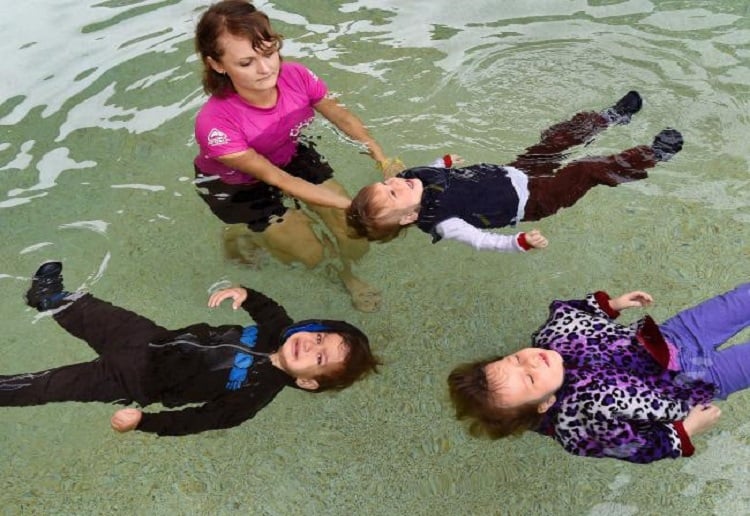A Melbourne swim school has attracted some controversy with its extreme teaching techniques.
Kids Aquatic Survival School in Southeast Melbourne don’t use floaties or goggles and don’t spend time teaching strokes.
Instead, they focus on staying afloat in winter clothing and teaching children to turn onto their backs and float.
Survival School instructor Anastasia Monakhov told News.com.au that her method prepared for “worst-case scenarios” such as a child falling into the water unsupervised.
Monakhov says that many of the children are pushed far outside their comfort zone, which is something that her young students and their parents can find very confronting.
“It’s an intense course, and that’s what gets results. We’re not about making it fun — we want to prepare them for worst-case scenarios.
“It is a tough start for a lot of the children but most of them realise pretty quickly that there’s no reason to be afraid,” Monakhov explained.
But Ross Gage, Chief executive of Aussie Aquatics, Australia’s learn-to-swim authority, said that children should learn to swim in a “positive, supportive and happy environment.”
He added that there is “no place for force in swimming lessons”.
The radical water safety school uses techniques from a system developed in the US called infant swimming resource which critics have blasted for its dramatic nature.
However, satisfied customers of the Melbourne school say that the results are worth it. One local mother, Tracy Bhogavalli, told News.com.au that she started taking her son, Jay, to Kids Aquatic Survival School when he was just 13 months old. “He was floating before he could walk,” she said.
Associate Professor Erica Frydenberg, from the Melbourne Graduate School of Education, said parents and teachers “should be monitoring for adverse effects”.
Professor Frydenberg, a specialist in child stress and coping, said positive reinforcement was vital.
“Trauma, ie extreme stress, can have adverse effects but it seems to me they are building resilience and trying to teach them how to cope under adverse circumstances,” she said.
Share your comments below.
We may get commissions for purchases made using links in this post. Learn more.




















12:36 pm
8:31 am
3:44 pm
6:16 pm
4:46 pm
12:30 pm
11:45 pm
10:15 pm
12:21 pm
12:02 pm
5:25 am
1:34 pm
1:25 pm
8:18 am
-

-
-
-
mom93821 replied
- 31 Jan 2016 , 10:07 pm
Reply7:30 am
-

-
-
-
mom90758 replied
- 30 Jan 2016 , 1:40 pm
Reply- 1
- 2
- 3
- »
Post a comment